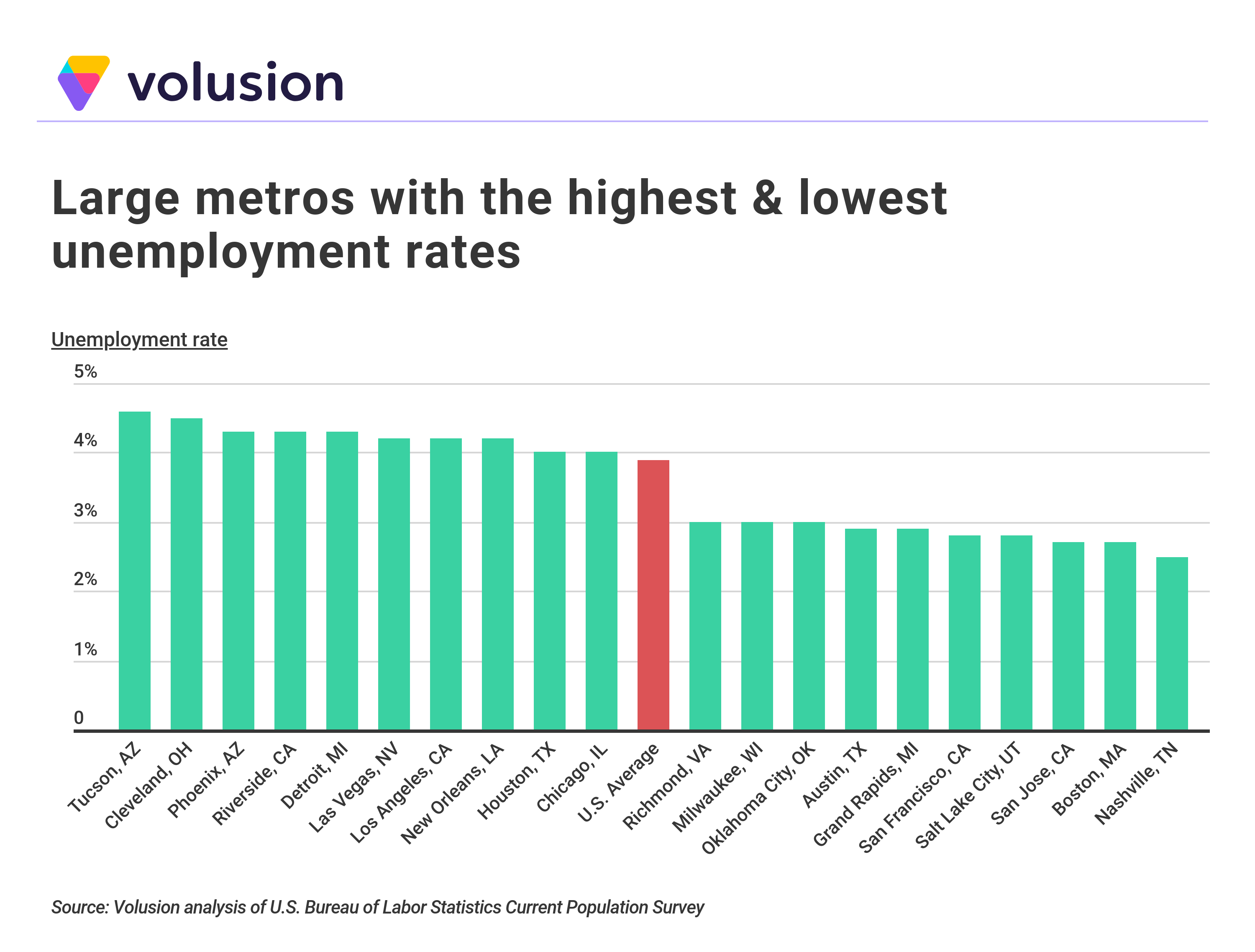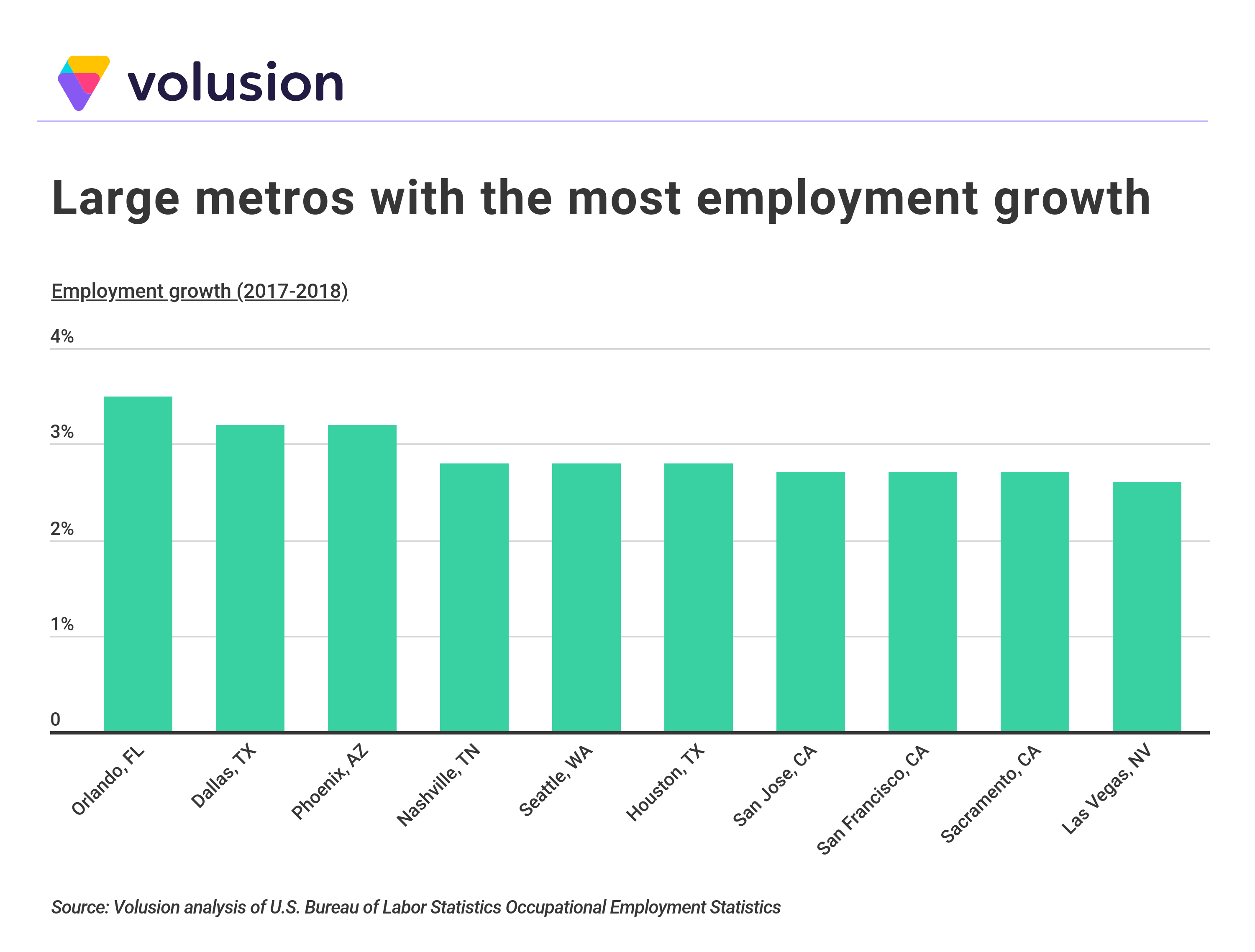 from ShopSite Blog https://ift.tt/2oLu9Jy
from ShopSite Blog https://ift.tt/2oLu9Jy via IFTTT
via IFTTT
Free Ecommerce, Marketing, Education, Hosting, Retail, Consumer Electronics, Jewelry, Mattress contents.
 from ShopSite Blog https://ift.tt/2oLu9Jy
from ShopSite Blog https://ift.tt/2oLu9Jy via IFTTT
via IFTTT

As an owner of an online business, you know how vital customer service is for your brand. It helps you beat competitors and win the hearts of your customers. But customer communication habits are changing. One day they contact you via email or phone; the next day they use Facebook.
These changes are inevitable. Modern consumers switch between channels while communicating with friends or family, and they tend to have the same habits while connecting with brands. For you, it's vital information. If you want to keep up with ongoing changes, you need to be open to multi-channel customer service.
Multi-channel customer service is all about giving your customers the choice and convenience to decide how they want to contact you. It’s a better experience when customers can seamlessly contact you in a way that is simple, known, and natural for them.
Companies that open multiple communication channels and design a consistent customer experience have a higher chance of engaging visitors, impacting their purchasing decisions, and boosting online sales.
As a small business owner, you may wonder how to deliver stellar service without spending a ton of money. No worries — you have options! Below you’ll find a list of different communication channels you can cover at low cost, plus tips to help support them efficiently.
Being able to assist a customer right when they experience a problem is ideal, but it’s not always possible. Fortunately, not every case requires your direct assistance. Sometimes, customers can solve their problems themselves, provided they are given proper information. Research shows that up to 24% of American consumers prefer to use a self-service website to answer simple inquiries.
Research shows that up to 24% of American consumers prefer to use a self-service website to answer simple inquiries.
Therefore, if your team is small and can’t focus entirely on responding to inquiries, consider creating a FAQ section or a knowledge base. Such tools can dispel customers doubts and help them resolve minor problems. For you, this means less money spent on staffing and more time to focus on demanding tasks.
If your customer base is large enough, you can even create a customer forum or a Facebook group. Data shows that a dedicated community of users can handle up to 67% of customer service interactions.
Over 60% of consumers say they have used social media channels for assistance. This method is especially popular among millennials who place a high demand on quality customer service. If you sell to younger consumers, social media is an essential service channel.
Interestingly, only 20% of consumers expect brands to answer their social media questions immediately. That makes total sense when we examine the way people use different communication channels in their daily life: if we call a person, we expect them to pick up the phone — and we get irritated when they don’t answer.
On the other hand, we’re used to waiting a bit for the answer from a friend while connecting via Facebook. When it comes to business communication, people have similar expectations regarding contact timeframes.
Only 20% of consumers expect brands to answer their social media questions immediately. [However,] up to 48% of consumers expect companies to respond to their social media questions within a maximum of 24 hours.
With that said, up to 48% of consumers expect companies to respond to their social media questions within a maximum of 24 hours. So although you can answer some social media inquiries with a slight delay, try to take care of them the same day.
Additionally, you should never wait on replying to a serious complaint. Social media gives customers the power to share their posts with plenty of other users at breakneck speed. An angry customer can start a fire from just one little spark, even if their claims aren’t accurate. The only way to prevent the a negative social media storm is to monitor consistently for complaints, then react quickly and reasonably.
Live chat is becoming a more and more popular communication channel (2019 Customer Service Report). There’s nothing surprising about this. Live chat channels let customers connect with brands instantly, no matter which device they're using.
Businesses can use Live Chat to serve more than one customer at a time, allowing them to solve problems as they appear and boost customer satisfaction as a result.
But that’s not all. Live Chat allows you to engage website visitors proactively by sending them personalized invitations to chat. Such chat greetings are triggered when a visitor performs a particular action on a website. For example, when they enter a pricing page, gather several items in their shopping carts, or spend a specific amount of time on the checkout page.
Live Chat allows you to engage website visitors proactively by sending them personalized invitations to chat.
Microsoft's research found out that over 60% of consumers increase their perception of a brand after receiving proactive notifications from companies. Our data at LiveChat shows that visitors invited to chat are more likely to convert. It seems clear that investing in live chat communication is a game worth playing.
Online shoppers find live chat communication very convenient. But when your customer base is growing rapidly, your small team may not be able to meet the pace. Failure to provide quick assistance to every person can quickly lead to lower customer satisfaction.
If you can’t afford to hire more live chat agents, you can take advantage of chatbots. 55% of users say they would enjoy getting an instant response to simple questions from a chatbot.
55% of users say they would enjoy getting an instant response to simple questions from a chatbot.
Bots hold their own in cases of simple, repetitive issues and can significantly speed up your services. They can assist your customers with booking appointments through interactive calendars, help them track ordered packages, gather contact details or display your store’s offers.
Unlike human agents, customer service chatbots can support multiple visitors simultaneously. They're a perfect solution for when your customers demand fast live chat responses, or after your company's working hours.
The phone is the most traditional communication channel of the IT era. No wonder it’s still popular among older generations. When it comes to millennials, however, preferences are quite the opposite. More than half of them prefer to contact brands via live chat rather than via phone.
If you sell mostly to young and tech-savvy consumers, you probably won’t pick a phone up very often. In that case, you'll want to put more effort into social media or live chat support.
However, over 40% of all customers make calls in cases of complicated and urgent issues, particularly concerning billing or personal data. Therefore, it’s still worth providing the option for phone support. It will often be the first choice among customers who are seized by panic and need to hear a human voice, if only to reassure them.
Even with all the available channels consumers have for contacting brands, over 60% admit to choosing email first.
There are good reasons for this choice. Email offers a better experience for consumers who don’t like to listen to hold music or wait for a customer agent to pick up the phone. It’s also a safer option for consumers who are afraid to communicate in a foreign language in real-time.
Email offers a better experience for consumers who don’t like to listen to hold music or wait for a customer agent to pick up the phone.
An essential aspect of email communication is to provide answers within 24 hours. If you fail to do so, customers may get nervous and bombard you on social media, grousing about your poor service.
If you feel that your email communication is spinning out of control, it may be time to look into a ticketing system. Ticketing software helps to automate email communication by gathering customer questions on your website and converting them into tickets. It stores all messages in one place, so you can be sure that none of them gets lost in your inbox.
Delivering excellent multi-channel customer service is no longer a luxury solely offered by big and famous brands. If want to keep up with your competitors, you need to be open to new communication channels. The consistent brand experience is a must-have as well.
The good news is that you don’t have to cover all of the possible communication touchpoints. Choose those that are the most convenient for your target audience and that let you solve problems efficiently. Only then will you be able to consistently turn website visitors into happy customers.
 from Volusion Ecommerce Blog | SMB Marketing, Design & Strategy https://ift.tt/2n9Mpfa
from Volusion Ecommerce Blog | SMB Marketing, Design & Strategy https://ift.tt/2n9Mpfa via IFTTT
via IFTTT
The goal of every eCommerce business, whether it is an online store or a mobile application, is a constant increase in sales (or at least stable sales numbers). It doesn’t matter if you just finished an online shopping development process, or if you want to boost sales in an existing online business; great content is the key to increasing your eCommerce sales!
 from 3dcart eCommerce Blog https://ift.tt/2oGiPOT
from 3dcart eCommerce Blog https://ift.tt/2oGiPOT via IFTTT
via IFTTT

It’s not a bad time to be looking for a job. The U.S. is currently undergoing the longest economic expansion in its history, and the unemployment rate is the lowest it’s been in almost 50 years. In this job seeker’s market, now is an opportune time for workers to make career moves.

Despite the strength of the national labor market, some parts of the country are faring better than others when it comes to employment.
To find the best metropolitan areas for career opportunities, researchers at Volusion analyzed data from the U.S. Bureau of Labor Statistics and the U.S. Census Bureau to calculate a composite score based on the following metrics:
Together, these metrics provide insight into the strength of each metro area’s economy and employment situation. For the analysis, metros were grouped into the following categories based on population:
Here’s what Volusion found:
Among all wage and salary workers, the national median annual wage in 2018 was $38,640. However, this number tends to be higher in large metropolitan areas, with a majority offering wages higher than the national median. After years of stagnation, wage growth has also accelerated since 2013. Between 2017 and 2018, median hourly wages grew 2.5 percent nationally. In large coastal metros, especially major tech hubs like San Francisco, Seattle, and San Jose, wage growth is outpacing the national average.

The annual average unemployment rate for 2018 was 3.9 percent nationally. As with median wages and wage growth, unemployment rates differ across large metros—from 2.5 percent in Nashville up to 4.6 percent in Tucson.

Although the national unemployment rate remains low, there was no significant change in total employment nationwide between 2017 and 2018. However, employment growth varies by industry and location. Some of the industries in the highest demand include healthcare, education, hospitality, and professional services. In addition, about half of large metros had significant increases in total employment year-over-year, with Orlando, Phoenix, and Dallas boasting growth rates of more than 3 percent.

Fortunately for job seekers, the best metropolitan areas for career opportunities are dispersed throughout the country with locations from both coasts, the South, the Midwest, and Mountain States all represented. Here are the best metros for career opportunities:



Photo credit: Alamy Stock Photo

Photo credit: Alamy Stock Photo

Photo credit: Alamy Stock Photo

Photo credit: Alamy Stock Photo

Photo credit: Alamy Stock Photo

Photo credit: Alamy Stock Photo

Photo credit: Alamy Stock Photo

Photo credit: Alamy Stock Photo

Photo credit: Alamy Stock Photo

Photo credit: Alamy Stock Photo

Photo credit: Alamy Stock Photo

Photo credit: Alamy Stock Photo

Photo credit: Alamy Stock Photo

Photo credit: Alamy Stock Photo

Photo credit: Alamy Stock Photo

Photo credit: Alamy Stock Photo

Photo credit: Alamy Stock Photo

Photo credit: Alamy Stock Photo

Photo credit: Alamy Stock Photo
To identify the best metropolitan areas for career opportunities, a composite score was calculated based on the following metrics (weighted equally):
Employment growth, wage growth, and median annual wage are from the U.S. Bureau of Labor Statistics (BLS) Occupational Employment Statistics dataset. The 2018 average unemployment rate is from the BLS Local Area Unemployment Statistics dataset. Labor force participation, the percentage of workers that are full-time, and mean usual hours worked are from the U.S. Census Bureau 2017 American Community Survey 1-Year Estimates.
Metros were grouped into the following categories based on population:
 from Volusion Ecommerce Blog | SMB Marketing, Design & Strategy https://ift.tt/2moPTds
from Volusion Ecommerce Blog | SMB Marketing, Design & Strategy https://ift.tt/2moPTds via IFTTT
via IFTTT
The future is here!
Ok, drop everything for a moment and listen to this. Imagine a free ecommerce application that could drastically improve your online store’s user experience and SEO ranking as well. A revolutionary system that is so flexible that it can comfortably run on any ecommerce backend.
A bit of a stretch, you think?
Yes, I know how that sounds because I’ve been there too. Well, at least until I ultimately tried out this crazy thing they call Progressive Web Apps, or PWA in short.
Now, there are good reasons why businesses are increasingly falling in love with PWA. I’ll reveal all of them shortly. For now, though, allow me to introduce a specific application that will help you understand the whole concept of leveraging PWA.
Ever heard of Vue Storefront?
It’s a new ecommerce application alright, but its architecture is nothing close to what we’re already used to. And here’s the deal- Vue Storefront happens to be the biggest and most complete PWA so far.
But what does that mean for ecommerce?
This Vue Storefront review reveals everything you need to know- what the heck a Progressive Web Application is, how Vue Storefront is connected to all that, plus of course, its accompanying ecommerce features and capabilities.
Remember when we said mobile is barely getting started? Turns out we’ve been right all along. And here’s the proof.
Mobile came first and it subsequently introduced us to mobile apps. Then with time, the apps began merging with PC and web platforms as developers continued improving user experience to make it more seamless.
Increased advancements in all these areas have now pushed us to the verge of truly revolutionary ecommerce. So, in other words, welcome to the age of PWAs.
Now, a Progressive Web App offers the best of both worlds – web and mobile apps. More specifically, a PWA is built on typical web technologies, with some of the latest javascript features acting as the seasoning. The end result is a web application whose overall intuitiveness closely resembles a native iOS or Android app.
Take a look at this Starbucks site. Notice anything unusually odd compared to regular websites? Now, try loading it again but from your mobile phone.
It seemingly behaves like a native app, right? Smooth, seamless, and astonishingly fast. Well, that right there is the power of PWA.
And how is this relevant to ecommerce?
Well, consider this. Progressive Web Apps usually hold user device data and downloaded files in a cache. That essentially means the data is availed instantaneously as soon as requests are raised from the device.
And the best part? You can bet page loading is always super-fast, even when you’re dealing with extremely slow internet speeds.

The whole framework is facilitated by a service worker, which basically acts as a bridge between the server and the app. To process a request, therefore, it avails data that was already held in the device cache while simultaneously syncing everything with the corresponding server data.
Then because of a simple JSON file known as Web App Manifest, Progressive Web Apps normally display full-screen to provide a persistently immersive experience. This small feature essentially interacts with your browser and directs it to display the web application through the same interface as smartphone apps.
And that’s not all. The cache service workers combined with Push APIs and advanced browser tech have made it possible to install PWAs directly to your device’s home screen. Consequently, you can proceed to use it even after your device goes offline. In addition to that, PWAs can also receive push notifications.
Now, guess what? Google has been at the forefront of Progressive Web Apps from the start, along with Mozilla plus Microsoft.
And after testing the whole thing on numerous projects over and over again, this is what they concluded about Progressive Web Apps:
One company that has seen these benefits firsthand is Tinder. Previously, their average app load time was 11.91 seconds. But, after introducing a PWA version that happened to be 90% lighter than their native android app, the loading time dropped considerably. And as a result, their user engagement levels shot up quite significantly.
If that doesn’t convince you, maybe Ubers’ story will. By leveraging the power of PWAs, the company was able to come up with an app that has great loading speeds even on 2G. And its corresponding load time? Well, their 50kb PWA consistently manages to load in less than 3 seconds.
Now, we’ve barely scratched the surface here. There are many more success stories from a wide range of brands. All thanks to the revolutionary capabilities of Progressive Web Apps.
That said, let’s now go to the practical bit.
So, what exactly is Vue Storefront?
Vue Storefront, for starters, is an open-source Progressive Web Application developed for online businesses. Its principal objective is helping digital merchants and enterprises boost their customer experience levels.
Thankfully, you don’t need a specialized ecommerce system to use Vue Storefront. Since its entire framework is built using Headless architecture, you should be able to set up your own backend integration. That, in short, means Vue Storefront is a holistically flexible application capable of integrating with any ecommerce platform to serve as a front-end.
So far, its developers have integrated it with Magento, Spree Commerce, Shopware, Shopware, plus a host of other platforms.
And considering it’s supported by more than 50 oficial partners who work with over 180 contributors plus an extensive community of more than 2100 developers, you can expect additional integrations to roll out very soon. Seems like Vue Storefront is only getting started.
But then again, while their innovation rate is commendable, you don’t have to wait for Vue Storefront’s team to come up with an integration for your current ecommerce platform. This PWA is fundamentally coded in Vue.js, and it relies on Elasticsearch for its database, as well as Node.js when it comes to the server-API.
If you’re a seasoned developer, therefore, I guess you can tell already that setting up a new front-end shouldn’t be a challenge at all. But, in case of any difficulties, Vue Storefront comes with multiple tutorials and comprehensive support documentation. You can use all that to figure out how to tweak its open-source code.
If that sounds like something you’d want to do, Vue Storefront is accessible on GitHub. And interestingly, it has so far attracted more than 5,000 stars on the platform. Looks like it might reach 50,000 before the end of the year.
Ok, not bad at all. But, what exactly are merchants enjoying on Vue Storefront? Does it really have the features that could push your business to the next level?
Allow me to answer that by walking you through various Vue Storefront’s attributes.
First things first. Considering user experience is the principal focus here, how exactly does Vue Storefront’s interface perform?
Well, one thing you can expect from Vue Storefront is to break the device barrier. Since it’s a web application, you should be able to launch and run it on any device. That means Vue Storefront eliminates the challenge of developing multiple native applications for each device OS.
Another problem you can solve via Vue Storefront is the bulkiness of native apps. Android, iOS and PC apps are getting heavier by the day with every new feature developers introduce. That’s why app updates are notoriously famous for taking up more memory space.
With Vue Storefront, however, it’s almost like we’ve gone back to the age of Symbian apps. It uses much less data compared to native apps.
And the best part is, your store’s customer doesn’t need to download anything. They can access the native experience directly through their web browsers.
As a matter of fact, they don’t even have to go online. Vue Storefront allows them to shop comfortably even when their devices are offline.
Then get this. Although your ecommerce site ends up behaving like a native app, Google still considers it to be a website. So, of course, your online store will be indexed accordingly, just like other regular sites.
And here’s the thing. Chances are, your site will have a huge ranking advantage of other regular ones, because Google tends to favor websites with fast loading speeds. Plus, it worth noting that search engines are increasingly switching to mobile-first indexing.
Speaking of which, a great loading time means more traffic. By now, you’ve probably noticed that poor webpage loading speeds trigger high bounce rates since internet consumers hate to wait. Therefore, with increased traffic flow, you should be able to improve your overall conversion rate over the long haul.
Another tactic you could employ to boost that even further is sending push notifications. Vue Storefront allows you to keep your leads engaged by communicating with them via push messages. You can take advantage of that to run promotions as well as cross-sell and up-sell various products.
The team behind Vue Storefront seemingly began with Magento because it’s one of the biggest ecommerce platforms in the world today. Plus, it’s an open-source system that combines great functionalities with limitless flexibility. That’s why, in fact, businesses and enterprises are exceedingly joining the Magento bandwagon.
If your one of the many, you can get started straight away by taking advantage of Vue Storefront’s Magento application. The process, however, is not as simple as you might imagine.
At first, you have to rely on workshops to plan your project accordingly. That means specifying not only your project scope, but also the corresponding budget and time.
Then next is the proof of concept and its objective is confirming the impact Vue Storefront stands to make on your businesses. Consequently, you might have to run a brief instance of the Vue Storefront framework while conducting various user experience tests.
That alone could prove to be quite handy when you need to convince stakeholders to invest in the app. Plus, you’ll also get the chance to make informed decisions about the upcoming rollout based on how users respond to the new store version.
All in all, the proof of concept should take you a few weeks- maybe 4-6 at most. Then using the data you’ve gathered, you can proceed to implement a full PWA version of your ecommerce site using Vue Storefront. And, as time goes by, you can gradually work on the underlying open source code to align your business with the ever-changing market needs.
Vue Storefront comes with two different component types.
At the foundation, we have the Core Components. They are built based on the fundamental business structures of typical online stores. So, in a way, they save you the trouble of creating everything from scratch.
That said, the core components can be adopted by your site themes. All it takes is simply styling and defining the accompanying HTML markup.
And while you’re at it, you’ll notice that each core component offers a distinct interface, which you can easily rework through your theme.
Well, if you’re up for the task, you should find the core components in every module’s component folder. Then once you do, apply them to your themes as mixins.
Speaking of which, I bet you’ve probably guessed the second type of components already. And yes, you’re right. They are Theme Components, which represent the front-end layout that you ultimately display on the app.
While you can place your own specialized components within a theme, the easiest method to apply business logic is always leveraging the core components.
Although Vue Storefront continues to avail pre-designed themes, you don’t have to use them at all. Instead, you can create your own ecommerce themes, and then combine them with the app’s core business logic for a complete ecommerce experience.
But, you’ll need HTML and CSS skills to achieve that. Or alternatively, simply hire an experienced developer to handle the entire process. Vue Storefront even allows you to further customize its core components if you need to.
Come to think of it, however, building your own theme from scratch seems like a cumbersome process. Besides, Vue Storefront comes with its own solid themes in the src/themes folder.
The latest Theme 2.0, for instance, has been created using Google UX Retail Playbook. That translates to well-optimized user experience. But that’s not all. Since it’s dynamically flexible, you can tweak it in many different ways to create your own specialized design.
Here are some of the ecommerce features you’ll find on Vue Storefront:
Acquiring Vue Storefront will cost you nothing. Not even a dime. Costs only start piling up when it comes to the subsequent customization stages.
Unless you’re experienced in coding, you’ll be forced to hire a team of developers to integrate Vue Storefront with your ecommerce site, as well as tweak its core components and themes.
There’s no denying that Vue Storefront is a revolutionary tool for improving your customer’s user experience. And considering it’s an open-source Progressive Web Application, it’s available to everyone for free.
The problem with Vue Storefront, however, is the implementation process. Embedding the application with your ecommerce site is a technically complex process that requires heavy coding. It’s certainly not something you can manage without coding skills.
But, that’s nothing compared to the benefits of PWAs. Vue Storefront is worth the effort. So, you can consider hiring an experienced developer to execute it accordingly. Besides, its Headless architecture makes it a flexible application that can be embedded with any ecommerce platform backend.
All in all, therefore, Vue Storefront is for all types of online businesses and enterprises. As long as you’re running an ecommerce site, this Progressive Web App is worth considering if you want to enhance your overall customer experience.
It’s a clean bill of health from us here at ecommerce-platforms.com. Now, over to you- what are your thoughts?
The post Vue Storefront Review – Everything You Need To Know appeared first on Ecommerce Platforms.
 from Ecommerce Platforms https://ift.tt/2nWiUNM
from Ecommerce Platforms https://ift.tt/2nWiUNM via IFTTT
via IFTTT
If you’re a Shopify user, I bet you’ve already tried out some of its default marketing and promotion tools. So, of course, you must have noticed that while a few of the features are pretty decent, the bulk of its default customer engagement functionalities leave much to be desired.
Call it what you want, but the truth of the matter is, Shopify just doesn’t offer the marketing features you need to properly drive conversions. But, on the bright side, at least the platform is flexible enough to support a wide range of third-party app integrations.
Now, at the top of my integrations wish list are marketing apps. I’m always on the lookout for the best marketing apps on the Shopify App Store. Consequently, an omnichannel marketing app with an overall rating of 4.8 stars from more than 600 reviews is one thing you can bet I wouldn’t fail to notice.
And that’s how I discovered Firepush, which happens to be an omnichannel marketing app for Shopify, capable of email marketing, SMS marketing, web push messages, plus Facebook messenger marketing.
And that’s how I discovered Firepush, which happens to be an omnichannel marketing app for Shopify, capable of email marketing, SMS marketing, web push messages, plus Facebook messenger marketing.

That said, we’ve taken the time to test out all the Firepush features on Shopify. And this Firepush reviews piece provides an unbiased report of everything- from its marketing functionalities and pricing, to its accompanying weaknesses.
So, let’s lay bare everything about it. What does Firepush pack in its engine? And what exactly does omnichannel marketing entail in the first place?
Remember the last time you interacted with prospects or customers on different platforms?
I guess you probably combined email with social media messaging. Or perhaps you also engaged the leads using pop-ups on your site or SMS messages, and the whole thing did not follow a systematic pattern. Each channel possibly had its own distinct campaign, complete with independent variables and different sets of customers.
Now that’s what you call a multichannel marketing strategy. It’s all about casting the net far and wide to drive as many engagements as possible. The only problem, however, is this – the channels are disconnected and each one tends to operate independently.
Well, that’s precisely what omnichannel marketing seeks to address. This approach goes over and above multichannel marketing to unite and streamline all the channels. The end result is a holistically inter-connected marketing framework that offers a continuous engagement experience as customers switch between the channels.
In short, therefore, you can think of omnichannel marketing as an integrated and well-organized multichannel system. The subsequent seamless communication workflows are effective when it comes to customer engagement, and they’ve been shown to increase conversion rates by over 250%.
It doesn’t end there though. During the actual purchase process, customers engaged via continuous omnichannel experiences typically spend 13% morethan other buyers. Then to top it off, businesses with robust omnichannel engagement systems have a customer retention rate of 89%.
So, clearly, omnichannel marketing translates to optimized engagement experiences and improved conversions.
Now back to the main subject. Is Firepush capable of achieving such a seamless communication workflow?
Let’s find out by assessing the app from all the possible angles.
Firepush is essentially an automated omnichannel marketing app for Shopify. It combines email marketing, SMS marketing, web push messages, and Facebook messenger marketing on one centralized dashboard. The channels then work in tandem to support each other accordingly as well as streamline marketing campaigns.
As a result, you can proceed to launch full-fledged campaigns even when the contact information is not uniform for all your customers.
If one set of customers, for instance, leaves only their phone numbers, while another happens to drop only their email addresses, you should be able to target both groups simultaneously from a single dashboard.
Another thing Firepush is renowned for is its personalization. It allows users to send automated personalized messages through its engagement channels.
And speaking of automation, Firepush is also capable of recovering abandoned carts for you. Then during the purchase process, it can still trigger additional spending by cross-selling related items. And as the customer leaves, you could also have Firepush prompt for product reviews.
Other than that, Firepush is built to hunt down old customers through re-marketing techniques. You can take advantage of its tools to reach out to customers who fail to return after a prolonged period of time.
So, all in all, Firepush is a multi-faceted tool for merchants who want to maximize all the available sales opportunities. This has seen the app attract over 20,000 Shopify users (including more than 120 Shopify Plus users) so far, who happen to be spread out across over 130 countries.
As you get started on Firepush, one of the first things you might want to do is set up a subscriber base.
Now, if you happen to have a solid one already, it turns out you won’t be able to automatically import the contact details into your Firepush account. Quite a bummer, I must admit.
But, on the bright side, importing contacts is not entirely impossible. All you need to do is simply get in touch with the tech support team at Firepush, and they’ll handle the rest for you.
Just provide them with your list of subscribers, the sender IDs, or the applicable API key, and voila! You’ll ultimately have your contacts on your Firepush dashboard.
That said, let’s assume you’d want to build your subscriber-base from scratch. What are your options?
Well, it seems Firepush makes up for the lack of automated importing features by providing a wide range of subscriber sign-up auto-prompts.
I particularly prefer using its welcome forms since they usher in new site visitors while requesting them to sign up. That means you get the chance to turn them into subscribers before they even proceed to the rest of the site.
But then again, let’s be honest here. Welcome sign-up boxes are not 100% effective. Some of your visitors might choose to ignore them altogether.
Thankfully, however, Firepush has a much better trick up its sleeve. You can compel such visitors to sign up by promising to alert them as soon as your product prices drop. Such types of requests are strategically placed on product pages.
Closely related to that are discount code sign up boxes, which are also increasingly proving to be effective in securing subscriptions. Very few people can reject grabbing a discount opportunity that only requires them to subscribe to a list. So, basically, each sign up should generate a redeemable discount code.
Otherwise, you could also take advantage of delivery sign up boxes, which usually give customers the chance to track their purchases. Then for the few who happen to shop when your stock numbers are low or depleted, you could lure them to subscribe for updates as soon as their preferred products are back-in stock.
When it comes to marketing campaigns, web push messages are particularly attractive on Firepush because you get up 1,000 for free every month. That’s right- you can engage your site visitors on a permanent basis without paying even a single dime.
Then get this. Firepush is not just some random web push notification service. Its notifications are well-structured to offer you the flexibility you need to run an array of web push marketing campaigns.
For starters, you get the benefit of using personalized greeting messages to welcome a new contact as soon as they subscribe to your campaigns. And while you’re at it, you can even throw in a couple of product offers to fast-track the conversion process.
Speaking of which, Firepush is also flexible when it comes to promotional push notifications. You can convince prospective shoppers to commit to the end through thoughtful messages on stuff like flash sales and discounts.
Plus, for quick conversions, you can create a false sense of urgency through discount countdown messages. This is, in fact, one area where Firepush stands out from its competitors. And it goes like this- simply apply a temporary discount to any campaign to increase your chances of achieving a positive outcome.
That means you could apply countdown notifications to flash sales, promotional offers, etc. The choice is yours.
In the event of a flash sale, for instance, you might want to set the notification message to show for only a specific period of time. Firepush will then go ahead and notify your visitors during the sale offer period, hence avoiding cases of outdated push messages that could make you appear insincere.
With Firepush, you can also take advantage of web push campaigns to drive the sales of selected items that you stock seasonally. We’re talking about stuff like winter wear, Christmas decorations, Halloween costumes, etc. You’re free to focus your messages on such items on a periodic basis.
So far so good. But, make no mistake about it. Firepush is not limited to new customer engagement. You can also use it to increase sales, recover abandoned carts, as well as trigger repeat purchases from your regular customers.
Its cross-sell and up-sell web push notifications, for instance, are particularly handy when you need to maximize your sales opportunities. They can be tweaked to automatically make suggestions about additional products your customers could purchase to supplement their cart items.
Then after a successful sale, you can still allow your customers to track their product shipments through delivery update push notifications. And this tool does just that. It displays send order confirmations, updates on shipping progress, and much more.
In the end, when your customer’s order is ultimately fulfilled, you could follow up with an additional push message to request for product reviews. Such first-hand testimonials might go a long way towards convincing prospects.
Another campaign you might consider leveraging after closing a deal is the win back customer push. The trick here is to lure past customers back to your store by offering various personalized incentives. And you know what they say about repeat customers- they buy more than first-time shoppers.
But, if the opposite happens and you fail to convert successfully, Firepush gives you the chance to hunt down lost opportunities through its abandoned cart push notifications.
Unlike other typical abandoned cart campaigns, the good thing about Firepush’s notifications is that you don’t need your shoppers’ contact information. You can proceed without phone numbers or email addresses.
And the trick is simple. As soon as your site visitors subscribe to your push campaigns, Firepush goes ahead and monitors their activities. Then in case they happen to abandon their shopping cart before checkout, the system automatically shoots personalized web messages to lure them back.
Price drop push messages are extremely effective when it comes to that. They essentially alert selected contacts immediately you revise the prices of products they’d be interested in.
SMS Marketing features, on the other hand, are a lot like the web push functionalities we’ve already explored. The principal difference is, your subscribers have to give you their genuine phone numbers to proceed.
Now, when it comes to the actual campaigns, Firepush has a dynamic automation engine that can handle different types of SMS messages simultaneously. And thankfully, it allows you to specify personalization parameters according to how you choose to filter your subscriber list.
You can, for instance, tweak Firepush to send warm welcome SMS messages after it identifies new subscriptions. This move alone can boost the odds of attracting repeat purchases, especially if you include appropriate discounts and offers.
Additionally, it’s possible to target subscribers based on their order numbers, location, or tags. Then for the most exclusive offers, you can filter the contact list to focus on customers who prove to be exceptionally active.
The SMS templates here give you the freedom to run promotional campaigns like flash sales, cross-sell offers, discount offers, etc. And yes, you can also throw in discount countdowns to get into your customers’ heads.
Another SMS type that closely resembles web push notifications is Firepush’s seasonal update message. And just like we’ve seen with the former, it comes in handy when you’re selling season-based products like summer swimwear, Christmas lights, etc.
Other than that, Firepush provides review request, delivery update, abandoned cart, win customer back, and new product update SMS message capabilities. Yes, that’s right, it turns out they all mirror what you get from the corresponding push notification messages.
Firepush has built its email marketing system to be simple and straightforward for easy campaign management.
Not too simple though. Because that would only compromise its automation capabilities. In essence, the whole framework manages to attain an ideal balance between basic automation features and simplicity.
You’ll notice, for instance, that Firepush comes with a bunch of predesigned email templates to help you hit the ground running. You can configure them further to suit your campaigns, or alternatively, create your own templates from scratch.
Whichever option you choose, Firepush can convert your emails into large scale campaigns that stretch across your entire subscription list. And yes, it’ll still manage to personalize every single email for its corresponding recipient.
If you’re dealing with new customers, you can have Firepush automatically send them reward emails after their first purchase. They’d certainly appreciate thoughtful incentives like discounts and seasonal offers.
Speaking of which, you should consider tweaking your discounts offers through countdown emails. And as a result, your recipients might feel compelled to commit quickly before the discount period lapses.
But, if your efforts fail to materialize accordingly, you can still target cart abandoners via email. Firepush will flag any abandoned carts and proceed to automatically send emails with relevant personalized offers.
Then to top it off, Firepush provides win back email capabilities for the customers who fail to return to your store over the long haul. Consequently, you should be able to trigger repeat purchases over and over again.
Firepush maintains its flexibility even on its pricing plans. There are several options you could take depending on your desired monthly allowance for push messages, SMS messages, and emails.
That notwithstanding, however, push notification numbers is the principal pricing criterion here. SMS messages and emails, on the other hand, are seemingly supplementary functionalities, whose volume you can tailor based on your campaign setup.
All in all, it’s worth noting that you can proceed to use Firepush permanently without paying anything.
After signing up, you’ll notice the Free Planprovides up to 1,000 web push messages a month, along with 24/7 email and chat support, GDPR sign up popup, sign up boxes, basic reports, campaign booster, notification scheduling, and an unlimited number of subscribers.
Firepush is also generous enough to award you all its push notification capabilities on the free plan, with the exception of abandoned cart features. That means you can use it for admin push notifications, discount countdowns, discount coupon code notifications, delivery updates, back in stock alerts, price drop alerts, cross-sell pushes, wish list pushes, review pushes, promotional pushes, and welcome push notifications.
But, it doesn’t end there. If you ever want to use SMS and email campaigns, you don’t have to shift to a premium package. Simply add the extras to your plan at a standard rate of $0.001 per email, and as low as $0.0199 for each SMS message. But get this- SMS message rates on Firepush vary based on the recipients’ countries (the higher volume for SMS campaigns – the better pricing
You have to contact a member of the Firepush sales team to negotiate with them a special deal for high volumes.
On a rather sad note, however, the free plan doesn’t provide everything.
💡 If you’d want to extend past the 1,000 push notification message limit, remove Firepush branding, embed widgets, target abandoned carts, customize buttons, as well as use Hero Image support, you have no choice but to upgrade to a premium plan.
And with that, you get to add such supplementary functionalities to the base features that come with the free plan. That subsequently translates to the full Firepush omnichannel campaign privileges.
The amount you end up paying, however, depends on the message volume allowance. And here are the various categories:
Going by the level of features offered here, plus the accompanying message volume limits, Firepush is evidently an omnichannel marketing tool for small businesses on Shopify. It a simple automation system for personalized email marketing, web push notification marketing, SMS message marketing, and Facebook Messenger marketing campaigns.
The post Firepush Review – Omnichannel Re-Marketing App for Shopify Stores appeared first on Ecommerce Platforms.
 from Ecommerce Platforms https://ift.tt/2oFfjEp
from Ecommerce Platforms https://ift.tt/2oFfjEp via IFTTT
via IFTTT

Based in the East Midlands and sitting pretty much at the very heart of England, the famous ‘Golden Triangle of Logistics’ has continued to attract investment from the logistics sector for decades due to its excellent connectivity. In close proximity to the M1, the M6 and the M69, as well as being served by the M40, it provides the perfect strategic location for home delivery companies who place emphasis on speed and convenience.
Two weeks ago saw Tamebay visiting Hermes Rugby warehouse, which put down roots within the Triangle – materialising their growth ambition in August 2017 when they officially opened their Midlands Super Hub at the Rugby Gateway in Warwickshire, incorporating two fully-automated sortation tiers manufactured by Beumer.
We were welcomed to the hub by Jon Ormond, operations director of Hermes, who toured us through the space of 270,000 square feet. The flagship hub, which cost £31 million, remains the biggest of its kind in Europe. Following on from the completion of the company’s huge distribution facility in Warrington in 2013, the Rugby hub was built to further strengthen operations in light of several successive years of growth – and was originally designed to handle approximately one million parcels every day.
However, despite sanctioning the most substantial investment in Hermes history to date, the senior team at Hermes had the foresight to make the hub future proof, which included the capability to add a third sortation tier – a process that has just been completed ahead of the upcoming peak. The £16m project enhances existing output by 40% with the capability to process 1.35 million parcels each day.
Speaking to Jon Ormond, operations director of Hermes about the decision behind choosing Rubgy as a location for expansion, he attributed the move to the efficiency of transport links. “Rugby was an obvious location for Hermes as we looked to invest in our network and boost capacity. However, due to our rapid growth, we knew we had to put plans in place that would allow us to quickly scale up even further – and that is why we took the decision to leave necessary space so we could eventually construct a third sortation tier. After another highly successful peak season in 2017, we decided to push ahead with the third tier.”
“This additional investment of £16 million brings the total outlay to £47 million, but what is clear is that we now possess the largest, most efficient parcel distribution facility in the UK, if not Europe. This demonstrates our commitment to retailers who are continuing to invest heavily in ecommerce.”
The installation of the high specification sortation tier – once again manufactured by Beumer – has taken place over the past 12 months, overseen by the company’s in house engineering team who ensured that the hub has remained fully operational. The new tier can sort 22,973 items per hour which increase the hub’s hourly total to 68,919 items per hour. It measures over 1.1kms in length, incorporates 480 tonnes of steelwork, features 1,942 trays, and is powered by 41kms of electrical wiring. Scales measure the dimension and check the weight of every parcel whilst also checking for any damages.
Commenting on the completion of the third tier, Martijn de Lange, CEO of Hermes UK, said: “I’m absolutely confident the third sortation tier in Rugby will put us in the strongest possible position to further support the retail industry over the coming years.”
“For the last few years, we have witnessed double-digit growth due to our commitment to investing in our world-class network and infrastructure, our innovative fleet and our industry-leading portfolio of services solutions. In addition, our in-house engineering team is constantly optimising our equipment to ensure it is best in class and we will soon be introducing further automation to support our returns process in the coming months.”
However, Hermes’ investment extends beyond sortation tiers – with the company also enhancing their fleet of vehicles that serves the hub on a daily basis. Following an initial 12-month trial of Compressed Natural Gas (CNG) vehicles with CNG Fuels – the only UK supplier of Renewable Transport Fuel Obligation (RTFO) approved biomethane – Hermes initially ordered 30 Iveco Stralis CNG units, which were integrated into the fleet over the following months. This was the largest opening order of CNG tractor units from any UK company.
Hermes have now pushed ahead with stage two of their investment, which has seen the number of CNG vehicles within their fleet rise to 72. This number will grow to 78 before the peak season later this year. The vehicles are refuelled at Hermes’ Warrington hub and at third party stations in Leyland and Daventry.
Each of these vehicles reduces CO2 emissions by over 80% vs a comparable diesel Euro 6 vehicle, resulting in a reduction of around 150 tons of CO2 per vehicle per year and a reduction of 11,700 tons of CO2 across the 78 CNG vehicle fleet per annum. Other benefits of the CNG vehicles include 70% less NOX, 99% less particulate matter, 90% less NMHC and 88% less methane.
The countdown to Black Friday and Christmas 2019 is already on and industry commentators are already predicting record sales and volumes, despite low consumer confidence throughout the year. As a result, logistics companies have a responsibility to support their retail clients by increasing their capacity – and it is clear that Hermes is just doing that, both within their hubs and on the roads.
 from Ecommerce – Tamebay https://ift.tt/2mgO7Lf
from Ecommerce – Tamebay https://ift.tt/2mgO7Lf via IFTTT
via IFTTT

Etsy have announced a planned introduction of international postal solutions in a bid to offer their merchants reasonably priced shipping services.
In an announcement to Etsies, titled ‘coming soon: international postal solutions,’ the marketplace said that “we’re working to provide you with additional postal solutions that offer affordable rates and service.”
The move will aim to prevent future shipping disruptions and price spikes of international shipping rates being a hurdle for marketplace merchants who wish to expand beyond their borders.
“Last year, the United States Postal Service proposed leaving the United Postal Union, a global organization that sets shipping rates between countries. This move could have meant significant shipping disruptions and increases for international shipping rates when shipping to certain countries. However, a recent vote by the UPU decided that the USPS would remain as part of the organization.
Still, we’re working to provide you with additional postal solutions that offer affordable rates and service. We want to help prevent future shipping disruptions and international shipping rates from increasing. We’ll keep you updated on when these alternative mail solutions will be available!”
– Etsy.
 from Ecommerce – Tamebay https://ift.tt/2oBdhFl
from Ecommerce – Tamebay https://ift.tt/2oBdhFl via IFTTT
via IFTTT

Metapack have taken home a top award for their return’s product at the eCommerce Expo Awards 2019.
“What a fantastic evening at the eCommerce Awards, and a huge congratulations to Metapack for winning the best product for its fantastic returns product at eCommerce Expo 2019.”
– Graeme Howe, managing director, eCommerce Expo.
This year’s ceremony, which was held at the London Marriott Hotel in Grosvenor Square on the 25th September, saw hundreds of the ecommerce industry’s key players gathering to recognise and honour the achievements of their peers.
Judged by industry experts, the awards recognise innovative new products and services which cut costs, streamline processes and increase revenue for organisations operating in the ecommerce space.
The Best Product at eCommerce Expo was awarded to Metapack Returns, recognising its ability to simplify the returns process for shoppers via a self-service online portal.
“We are thrilled to receive our first accolade at this awards ceremony, recognising Metapack’s brand-new Returns portal. This award is a testament to all of our hard work over the past 12-months, and I’d like to thank every member of the Metapack team and partners for their hard work.
Returns are the latest in our portfolio of enterprise-scale ecommerce delivery software solutions, helping retailers and brands reduce their cost to serve returns while offering an improved and more convenient experience to their customers.”
– Duncan Licence, vice president, product, Metapack.
Over the past 12-months, the Metapack Returns software has undergone a number of significant developments to make the most of the new technology and return shipping services such as paperless labels, home collections, cross-border consolidation, and tracking notifications.
 from Ecommerce – Tamebay https://ift.tt/2orINp1
from Ecommerce – Tamebay https://ift.tt/2orINp1 via IFTTT
via IFTTT
The past week saw both DPD and Tesco hit by tech problems. DPD had a SNAFU when their chatbot started swearing at customers while Tesco had ...
